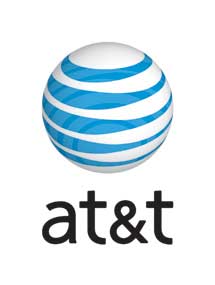UC Berkeley, AT&T collaborate to enhance campus network and Wi-Fi experience
AT&T plans to improve network and Wi-Fi coverage on the UC Berkeley campus in an effort to provide students, faculty, staff and visitors with better opportunities in mobile learning. The voice, data and Wi-Fi upgrades will take place over a period of 2-3 years, though some buildings are already seeing service improvements.
December 6, 2011
AT&T announced today (Tuesday, Dec. 6) plans to improve network and Wi-Fi coverage at the University of California, Berkeley, in an effort to provide students, faculty, staff and visitors with better opportunities in mobile learning.
 The joint initiative will expand and upgrade voice and data coverage in more than 80 buildings and place additional Wi-Fi hotspots on campus and in surrounding areas. Cellular service improvements already have begun, with upgrades complete inside UC Berkeley’s Haas School of Business and School of Law, and currently underway in the Student-Athlete High Performance Center.
The joint initiative will expand and upgrade voice and data coverage in more than 80 buildings and place additional Wi-Fi hotspots on campus and in surrounding areas. Cellular service improvements already have begun, with upgrades complete inside UC Berkeley’s Haas School of Business and School of Law, and currently underway in the Student-Athlete High Performance Center.
“This is a big win for the campus community,” said Michael Green, UC Berkeley’s director of telecommunications. “Surveys show that improved Wi-Fi, in particular, is at the top of the list of what our faculty, staff and students want.”
The campus community and guests will continue to have free access to the Internet through Airbears, UC Berkeley’s Wi-Fi network. Users with qualifying AT&T smartphones and high-speed Internet plans can access AT&T Wi-Fi (attwifi SSID) for free; other visitors will incur additional fees.
“Improving our wireless network and extending mobile services within our buildings can be challenging initiatives, especially at a time when the campus has fewer resources,” said Michael Mundrane, deputy chief information officer at UC Berkeley. “This unified effort is an example of what can be accomplished when institutions of higher learning collaborate with companies like AT&T to address students’ needs.”
AT&T is improving its mobile broadband network on campus to enable additional coverage and capacity.
“Network access should be the least of students’ concerns, and this commitment to improve their experience is allowing us to be part of their mobile learning experience,” said Kevin Carman, associate director of education field marketing at AT&T. “Solid network coverage creates an opportunity for UC Berkeley to develop mobile applications in the future – apps that will ultimately unite and engage the campus even more.”
Mundrane noted that the initiative to enhance mobile network services around campus is in line with Operational Excellence, UC Berkeley’s effort to make the university more efficient by, among other things, streamlining procurement to obtain services at a lower cost.
The campus expects eventually to support only AT&T service for the business needs of its faculty and staff, Mundrane said. AT&T already accounts for two-thirds of the campus’s cell phone service expenses.
Five cellular carriers currently have antennas mounted atop campus buildings to provide cell phone and data coverage throughout UC Berkeley’s 178-acre campus and several outlying areas. Under the agreement with AT&T, antennas will be consolidated on several buildings, and AT&T service will be extended to high-use indoor areas by means of wires and cables. In the past, the campus has spent up to $20,000 of its own money on a single building with poor reception to provide cell phone service for faculty and staff.
Cellular upgrades at UC Berkeley are expected to take between two and three years, and will cover the student residence halls, the Clark Kerr campus, buildings located on city streets surrounding the campus, and Strawberry Canyon above the football stadium. The next network upgrades should take place early next year outside Residence Hall #2 on the south side of the campus and in Etcheverry Hall on the north side, with an in-building service upgrade in the Valley Life Sciences Building by early spring 2012.
AT&T’s investment in Wi-Fi upgrades will be matched by a $2 million campus expenditure over five years, but improvements – especially in the dormitories – already should be evident by the end of the year, Green said.
Campus faculty, students and staff can track the progress via an online website, http://ist.berkeley.edu/att/.
Additionally, AT&T will provide metropolitan Ethernet service to about 50 remote campus sites, including the Richmond Field Station and Albany Village. AT&T was selected as an official carrier based on cost and quality of service, Green said.
RELATED MATERIALS
- AT&T press release
- Information Systems & Technology AT&T collaboration Website